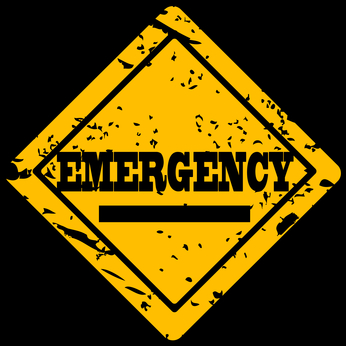
All too often, setting up an emergency response plan is treated as a necessary chore. Natural disasters like earthquakes and tornadoes are infrequent and hard to predict, so it’s understandable that businesses, who tend to think in terms of quarters, might be reluctant to prepare for an event that may never come or seems a long way off.
That’s the thing about preparing for the worst: it’s no fun to think about and only seems to cost time and money that you suspect could be better spend elsewhere. But you’d be wrong to suspect such a thing. The 2014 earthquake in Napa Valley cost local businesses more than $400 million - and that was ‘only’ a magnitude 6.0. Imagine if a 9.5 hits! It could level your entire operation in seconds. There’s no doubt about it: cutting corners on disaster preparedness is a false economy.
Of course, the potential cost to businesses goes far beyond the physical damage caused to offices and equipment. If, for instance, you run an insurance company and a major earthquake strikes, you’re going to be inundated with claims. Setting up a thorough emergency response plan to help keep customers informed and grease the wheels of the claims process will pay off in the long run. After all, who would switch insurers if their current policy got them through the worst disaster of their lives?
Keeping clients and employees informed - whatever your industry - is much easier than it used to be. Emergency text alerts can be set up in advance to cover every eventuality. Speedy and reliable, 90% of SMS messages are read within three minutes; it’s easily the most effective method for notifying people about road closures, approaching weather events, or sudden changes to normal operating procedure. Voice Broadcast has a role to play too, as it can communicate information in a more personal way.
Whichever emergency notifications method you opt for, advance preparation is critical. Let’s look at a few ways to optimize your emergency response plan:
- Know the drill. As soon as you open an account, familiarize yourself with the interface so you can act promptly. Ensure all employees know what to do in the event of an emergency.
- Secure opt-in permission. Communication via bulk texts and voice broadcasts are only permitted when people have given express permission to receive them - that goes for employees as well as clients. Inform them of how you intend to use the emergency alert system in a disaster.
- Test! It’s not just mobile marketing tactics that require thorough testing - emergency alerts should be tested to verify the accuracy of your contact list and ensure the message is easily understood. It goes without saying, but here goes anyway: you should seek specific permission and only issue a test message once permission has been granted and everyone understand’s it’s not the real deal!
When it comes to preparing for the worst, there’s no such thing as ‘over-prepared’ so hold regular staff meetings to go over protocol. This month is FEMAs National Preparedness Month, so there’s no better time to set up your emergency alert system. Stay safe…